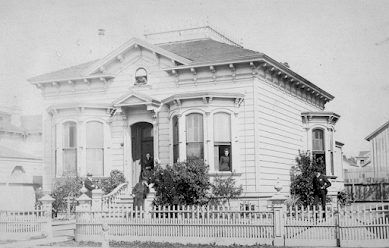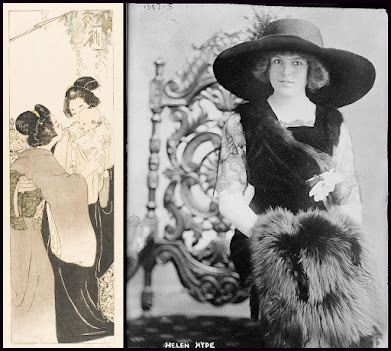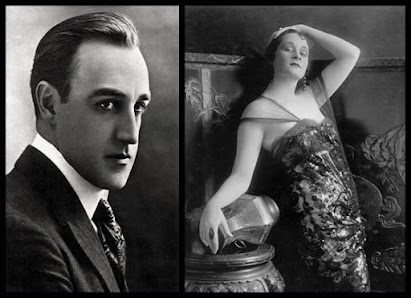 |
| Herbert Bashford and Grave Marker |
Plot 56, Grave 1758
Herbert Bashford (1871–1928) was an American poet, novelist, playwright, and editor whose writings helped shape the literary identity of the American West in the early twentieth century. Born in Sioux City, Iowa, on March 4, 1871, Bashford moved west during childhood, settling in Tacoma, Washington, where he began publishing poetry and essays at a young age. His early work, marked by a lyrical reverence for the natural world, reflected the influence of the Pacific Northwest landscape and established him as a regional literary voice.
In 1897, at the age of 26, Bashford was appointed State Librarian of Washington. During his tenure, which lasted until 1901, he oversaw significant growth in the state library's collection and infrastructure. Simultaneously, he continued his literary output, publishing his first major poetry collection, Songs from Puget Sea (1898), which cemented his reputation as a nature poet. The volume was praised for its evocation of Pacific coastal imagery and its celebration of wilderness.
Bashford relocated to California around 1901, settling in the San Francisco Bay Area. There, he expanded his literary repertoire to include fiction and drama. His poetry collections included The Wolves of the Sea and Other Poems (1901), which featured one of his most enduring works, "The Song of the Forest Ranger," and At the Shrine of Song (1909), introduced by George Wharton James. These volumes continued to explore his central themes of nature, solitude, and the spiritual resonance of the western landscape.
 |
| Herbert Bashford and Songs from Puget Sea |
He also published fiction, including Beyond the Gates of Care (1901), a reflective prose work, and The Tenting of the Tillicums (1906), a juvenile adventure novel set in the Pacific Northwest. The latter, published by Thomas Y. Crowell, was widely circulated and favorably reviewed. The title refers to the Chinook jargon word for "friends," and the story chronicles four boys on a wilderness camping trip, blending regional folklore with themes of camaraderie and exploration. Bashford also wrote several plays, including The Woman He Married, which was later adapted into a silent film released in 1922.
In 1921, Bashford served as editor of Overland Monthly, the influential San Francisco literary magazine originally founded by Bret Harte. Although the publication no longer commanded the national prominence it had in the late 19th century, it remained a vital forum for western voices. Bashford's brief tenure was marked by efforts to preserve the magazine's legacy while attracting contemporary talent. During his editorship, notable writers such as Mary Austin contributed to its pages. Austin, a prominent California author and advocate of environmental and indigenous issues, published fiction and commentary in Overland Monthly during this period. Bashford also curated retrospective essays on western literature, maintaining the magazine's connection to its literary past.
 |
| "The Woman He Married" from Photoplay, July 1922 |
One of Bashford's most ambitious later projects was A Man Unafraid: The Story of John Charles Frémont, co-authored with publisher Harr Wagner and published in 1927. This biography chronicled the life of the explorer, politician, and Civil War general, casting Frémont as a heroic figure in the American West. The book presented a celebratory narrative, emphasizing Frémont's courage and visionary spirit. Though later historians criticized the work for lacking critical depth, it contributed to popular interest in Western history during a time of growing nostalgia for frontier figures.
Bashford remained active in California literary and civic life through the 1920s. He continued writing, mentoring younger authors, and lecturing on western history and literature. He died on July 13, 1928, in Piedmont, California, at the age of 57. His death was noted in regional newspapers, which remembered him as a distinguished poet and dramatist whose work had helped define the cultural landscape of the West.
Bashford's literary legacy is rooted in his role as an interpreter of the natural and historical character of the Pacific Coast. Through poetry, fiction, biography, and editorial work, he captured both the majesty of the wilderness and the mythos of the American frontier. Though no longer widely read, his work remains a valuable window into the early twentieth-century imagination of the West.
Sources: University of Washington Libraries, Herbert Bashford Papers, 1899–1907; Library Journal, vol. 24 (1899), p. 38; "Iowa Authors and Their Works," The Annals of Iowa 9:6 (1910); Nuwer, Hank. Overland Monthly editor timeline; Fink, Augusta. Papers on Mary Austin; California Historical Society Quarterly, vol. 17 no. 1 (March 1938), pp. 87-89; Bashford, Herbert & Wagner, Harr. A Man Unafraid: The Story of John Charles Frémont. San Francisco: Harr Wagner Publishing Co., 1927; Find A Grave; IMDb entry for The Woman He Married (1922 film); and, Monrovia Daily News, July 14, 1928.





























.png)
.png)
.png)










